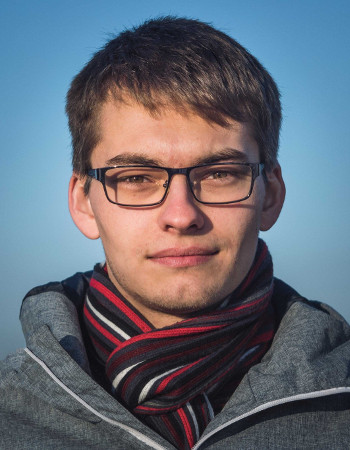Petr Zapletal

Petr Zapletal
Member of Fitzwilliam College
PhD student in Dr Nunnenkamp's group
Office: 524 Mott Bld
Phone: +44(0)1223 3 37459
Email: pz270 @ cam.ac.uk
TCM Group, Cavendish Laboratory
19 JJ Thomson Avenue,
Cambridge, CB3 0HE UK.

Research
I am generally interested in studying many body physics using quantum optical systems.
In particular, I am focused on the field of optomechanics describing the interaction between light and mechanical oscillators due to radiation pressure of photons deflecting off the oscillators. Optomechanical experiments have shown cooling of a nano-mechanical mode into the vibrational ground state and measurement of mechanical motion with a record precision to name but a few achievements. This progress in optomechanical control allows to probe quantum physics on mesoscale. Coupling of several mechanical and optical modes in optomechanical arrays opened a possibility to study many body physics. In such a setting, synthetic gauge fields for photons and phonons can be implemented to mimic effects of magnetic and electric fields. Together with reservoir engineering, synthetic magnetic fields led to nonreciprocal transport of photons and phonons. I have recently investigated backaction of particles’ movement on dynamical gauge fields, which undergo their own dynamics. In this dynamical situation, which naturally arises in optomechanics, synthetic electric field for photons can be generated and affect light propagation. We have demonstrated that nonlinear dynamics of gauge fields can result in unidirectional light transport even in one-dimensional arrays where no magnetic field is present.
In the future, I plan to investigate other nonlinear phenomena in optomechanical arrays. For example synchronization, which describes tendency of self-oscillators to match their phases and frequencies either within themselves or to an external drive. Novel quantum signatures of synchronization have been recently investigated in optomechanics and other platforms. Another possible direction is topological phases for sound and light. Due to recent progress in reservoir engineering, optomechanical arrays provide natural setting for studying interplay between topology and dissipation described by non-hermitian Hamiltonians.

In Plain English
Light composes of particles called photons. Importantly, photons carry momentum. As a consequence, when they deflect of an object, they push it. This results in a so-called radiation pressure force, which is tiny and we do not typically observe its effects in everyday life. However, in a laboratory, we are able to prepare mechanical objects that are light enough to be affected by this force. The field of physics describing the interaction between light and mechanical objects due to the radiation pressure force is called optomechanics. This light-matter interaction can be enhanced in an optical cavity, where photons circulate many times between two mirrors before leaking out. The advantage of such systems is that they can be well controlled and measured. By studying them, we can better understand quantum physics which describes behavior of atoms, electrons, photons and other microscopic particles. With this new knowledge, we will be able to design new devices which outperform current electronics.
Featured Publications
-
Dynamical Generation of Synthetic Electric Fields for Photons in the Quantum Regime
Quantum Sci. Technol. 4 044001 (2019) -
Dynamically Generated Synthetic Electric Fields for Photons
Phys. Rev. A 100 023804 (2019) -
Multi-copy quantifiers for single-photon states
Sci. Rep. 7 1484 (2017) -
Direct observation of phase-sensitive Hong-Ou-Mandel interference
Phys. Rev. A 96 033830 (2017) -
Squeezed-state generation from single-photon sources
Phys. Rev. A 90 043854 (2014)